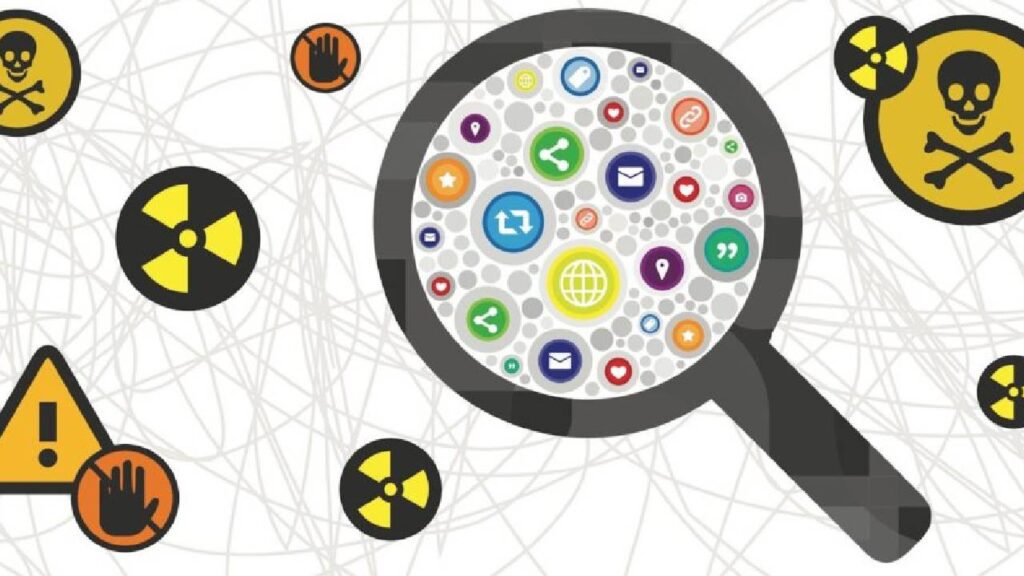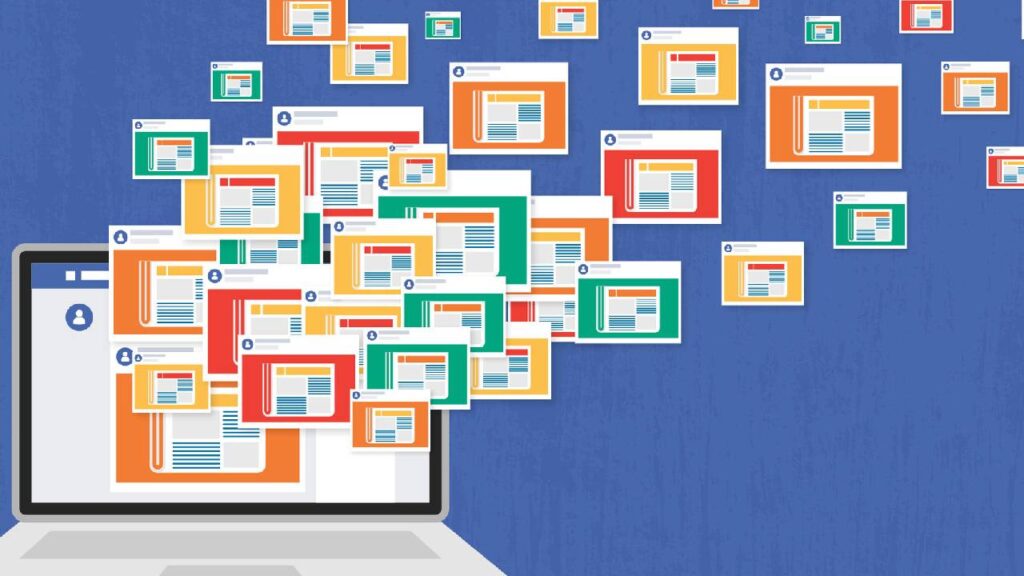Of late major political parties in India are known for having strong presence on various social media platforms because of the proven success of using information technology for effective political campaigns and direct communication with targeted audience. Social media presence has become an indispensable part of their political strategies. Yet, having social media presence is one thing and using it for proper communication with people is quite another. With some of the political parties employing social media campaigns as tools to manipulate voters with their distorted messages, informed public opinion is now at stake. Motivated SM campaigns involve the deliberate misuse of social media platforms like X (Twitter), Facebook, and Instagram to reach a wider audience, engage with supporters, and tailor political discourse for public consumption. This is done often by recourse to trolls, bots and deep fakes.
This week, The Pioneer’s Tanisha Saxena presents a perspective on how social media has become a significant platform for employing tools that colour political discourse and manipulate people in the digital age.
Social media campaigns have become pivotal in the realm of politics, wielding a profound influence on the way political messages are conveyed and received. Their significance can be dissected into various facets. Firstly, the sheer reach and engagement potential they offer are unparalleled, allowing politicians to swiftly connect with a vast and diverse audience while also engaging directly with voters on a personal level. This immediacy fosters a sense of accessibility and transparency, often at a great social cost.
“Social media platforms have revolutionized political fundraising, providing a convenient avenue for candidates to solicit campaign donations from supporters around the globe. This financial lifeline often translates into increased campaign resources and competitiveness. Another critical role lies in the rapid dissemination of information. Candidates can promptly share their policies, positions, and breaking news, bypassing traditional media gatekeepers. The ability to communicate directly with constituents fosters a sense of connection and trust,” says Tanya Sehgal, a researcher and contributor at Cybermedia Research.
Precise targeting through social media advertising further enhances the efficacy of campaigns. It allows them to reach specific demographics and swing voters, tailoring their messages to resonate with particular groups, thereby maximizing their impact.
Social media’s real-time feedback and data analytics capabilities empower campaigns to fine-tune their strategies. This dynamic feedback loop helps in adapting to evolving voter sentiment and preferences, ensuring campaigns remain relevant and effective.
Additionally, social media serves as a potent tool for mobilization, rallying supporters for events, rallies, and get-out-the-vote efforts. It can galvanize individuals and communities, turning online enthusiasm into tangible offline actions. Furthermore, social media enables politicians to respond swiftly to opponents’ statements or current events, shaping narratives in real time. It offers the agility required in today’s fast-paced political landscape.
The multifaceted role of social media comes bundled with a shadow side. Concerns about the spread of misinformation, the formation of echo chambers, and the influence of algorithms on political discourse are increasingly prominent. Social media’s power to shape public opinion can also be used to manipulate it, and the authenticity of online engagement is often debated.
Pervasive political messaging
Social media campaigns undeniably play a significant role in politics, revolutionising the way politicians/parties connect with the public and disseminate information. They offer a double-edged sword, wielding enormous potential for positive engagement and influence while also raising important ethical and informational challenges that must be navigated in the digital age. “What is visible often becomes marketable; we are all influenced! The line between authenticity and artifice has blurred in the era of social media. Indeed, social media campaigns have profoundly shaped the political landscape. Teams dedicated to various parties continually mold public opinion. Victory often hinges on who employs the most adept team. In a world where multiple realities converge, social media reigns supreme. Political parties have moved away from grassroots mobilization. Instead, issues are confined to digital debates, neglecting the tangible ground,” says Deepak Upreti, a senior journalist.
influenced! The line between authenticity and artifice has blurred in the era of social media. Indeed, social media campaigns have profoundly shaped the political landscape. Teams dedicated to various parties continually mold public opinion. Victory often hinges on who employs the most adept team. In a world where multiple realities converge, social media reigns supreme. Political parties have moved away from grassroots mobilization. Instead, issues are confined to digital debates, neglecting the tangible ground,” says Deepak Upreti, a senior journalist.
While social media campaigns could ideally play a constructive role in politics, they have veered toward the negative. “In a generation tethered to their screens day and night, they rarely seek diverse sources to hone their analytical skills. The pursuit of truth seems elusive, drowned amidst the digital clamor. In this social media-dominated world, discernment often gives way to conformity,” adds Upreti.
By skillfully utilizing the power of the digital sphere, the Bharatiya Janata Party (BJP) has undeniably left its mark on the history of Indian politics. The BJP has choreographed a victory that has resonated throughout the virtual landscape and had a significant impact on the country’s political debate.
“In this age of interconnectedness, the BJP’s strategic acumen has prompted rival political factions to embark on a sweeping transformation of their social media strategies. This evolution has birthed a digital arena teeming with myriad politically charged messages, forging a landscape where elections stand at the precipice of susceptibility to the subtle manipulations orchestrated through the vast canvas of social media,” observes Seema Gupta, professor of political science at University of Delhi. She elaborates, “Reports emanate revealing the BJP’s impressive web of influence, weaving through the digital fabric with an intricate tapestry of approximately 2,00,000 to 3,00,000 WhatsApp groups, and overseeing the operation of a staggering 18,000 counterfeit Twitter accounts. The party’s formidable IT division, endowed with a keen sense of dissemination, orchestrates the symphony of misinformation and propaganda, skillfully manipulating the strings of communal divisions to reap the electoral harvest. The proliferation of such disinformation campaigns, coupled with the fervent promotion of Hindutva ideology, further stokes the fires of discord, exacerbating tensions between India’s Hindu and Muslim communities. In unison, these developments cast a somber shadow upon the sanctity of truth and the cherished secular-democratic tapestry that India holds dear to its heart.”
In this complex interplay of politics and technology, India finds itself at a critical juncture, where the delicate balance between truth and manipulation, unity and division, hangs in the balance. It remains a formidable challenge to preserve the pluralistic and democratic essence of the nation, while navigating the intricate web of digital politics woven by the BJP.
Clever content triumphs
In the backdrop of the 2014 Lok Sabha elections, the BJP orchestrated a captivating promotional video campaign that harnessed the power of YouTube to allure a younger demographic. This artistic endeavor showcased a dynamic ensemble of youthful individuals, rhythmically swaying to the beats of a rap melody. The overarching objective of this video was to illuminate the reasons why Narendra Modi, the BJP’s nominee for the esteemed position of Prime Minister, was deserving of the first-choice vote from the burgeoning youth population.
“The video artfully accentuated pivotal government schemes and visionary initiatives, which the BJP ardently believed would strike a resonant chord with the younger electorate. Among these, the Ujjwala Yojna and the ambitious Digital India program took center-stage. With the creative vehicle of rap composition and the vibrant presence of young voices and faces, the BJP aspired to forge a profound connection with and galvanize the youth vote. This immersive narrative underscored the affirmative transformations that these government initiatives promised under the astute leadership of Narendra Modi,” says Dalip Mcune, director at a media institute, sharing his views of the campaign video.
Social media campaigns indeed wield significant influence on political outcomes, exemplified by Narendra Modi’s adept use of it during his initial term as Prime Minister-an illuminating case study. Through deft messaging and image curation, they possess the power to mold public perception.
exemplified by Narendra Modi’s adept use of it during his initial term as Prime Minister-an illuminating case study. Through deft messaging and image curation, they possess the power to mold public perception.
Samarth Saifi (name changed), hailing from Meerut in western Uttar Pradesh, is a professional in the field of digital marketing and PR consulting. He is the founder and operator of Trendzz Media (name changed), an online marketing agency known for its unique service of facilitating “Twitter Trending” for political parties and individuals. Samarth has reached out to the national coordinator within the social media department of the Congress party for a potential collaboration. Speaking about it, Akkash Taywade, national coordinator at Congress party, shares: “The key differences between BJP and Congress party social media campaigns is that Congress never does paid promotions in the sense that we always have our own activists in the forefront. On the contrary, BJP has this web of huge social media marketing and people get paid to do stuff. We are authentic in the way we create content for promotion. People reach out to me and say stuff like I should do other paid content. They literally have a document where it is mentioned how much you would be paid for tweets or posts on Instagram and other handles. We don’t want to go fast. We want to be genuine. Moreover, BJP has comparatively more money to spend on such tactics. They have people who are not even activists, and their only job is to post stuff across social media. Our Bharat Jodo Yatra was a sincere attempt to make people realise that we have never promised things that are not practically possible and whatever we do is backed by evidence and data. Bharat Jodo Yatra indeed helped in fostering a sense of transparency and accountability, demonstrating that our actions are grounded in evidence and data, rather than empty promises. People and especially the youth connected with Rahul Gandhi, and it was overall a wonderful step.”
do stuff. We are authentic in the way we create content for promotion. People reach out to me and say stuff like I should do other paid content. They literally have a document where it is mentioned how much you would be paid for tweets or posts on Instagram and other handles. We don’t want to go fast. We want to be genuine. Moreover, BJP has comparatively more money to spend on such tactics. They have people who are not even activists, and their only job is to post stuff across social media. Our Bharat Jodo Yatra was a sincere attempt to make people realise that we have never promised things that are not practically possible and whatever we do is backed by evidence and data. Bharat Jodo Yatra indeed helped in fostering a sense of transparency and accountability, demonstrating that our actions are grounded in evidence and data, rather than empty promises. People and especially the youth connected with Rahul Gandhi, and it was overall a wonderful step.”
In the 2022 Assembly elections, BJP conducted virtual rallies. Similarly, the Congress party also did about 10 virtual rallies. In fact, the Congress party’ virtual rallies attracted a larger audience compared to the physical rallies, with one virtual event reaching over 91,000 concurrent viewers, marking it as one of the highest viewership numbers in the realm of political Facebook livestreams.
Nevertheless, one must acknowledge the potential polarizing and divisive nature of such campaigns, their impact varying among disparate demographic segments. It is crucial to recognise that public sentiment is multifaceted, incapable of being ascribed solely to social media. Diverse factors, ranging from policies to economic conditions and cultural undercurrents, shape people’s viewpoints.
“Consider the intricate tapestry of opinions concerning political leaders like Narendra Modi; it is a mosaic of divergent perspectives. Some applaud his leadership, while others offer contrasting viewpoints. Public sentiment remains fluid, susceptible to ongoing discourse and deliberation. In the arena of politics, it is imperative to embrace a plethora of viewpoints and information sources to construct a comprehensive understanding,” says Diksha Kaushik, student of political science at the University of Hyderabad.
The BJP’s IT cell employed derogatory terms in its language such as ‘Pappu’ to describe Rahul Gandhi – a tactic that garnered attention in mainstream media. This strategy played a role in tarnishing the public perception of the Congress leader.
In response to these challenges and in acknowledgment of the escalating impact of social media on public sentiments and voter engagement, the Congress party substantially augmented its financial allocation towards social media promotion in 2019, surpassing its expenditure levels from 2014. This strategic move reflects their understanding of the expanding role of social media in influencing public opinion and galvanizing the electorate.
Still a long way to go
The divide in social media usage between urban and rural populations is notable, with urban users having higher engagement. Urban internet users typically access social media through laptops and smartphones at home, and through smartphones or a mix of smartphones and office laptops at work. In contrast, rural users have limited access due to network coverage issues and device affordability challenges. Rural users also tend to prefer other online activities like music, gaming, and video clips over core social networking sites like Facebook and X (Twitter). In terms of gender, male social media users slightly outnumber females, reflecting a higher usage of the internet among males in India. However, female users are increasingly using social media for professional networking, online recruitment, and connecting with peers. The future growth of social media is expected to come from rural markets and townships in India, while urban areas will see continued growth, particularly among older age groups (44 years and above).
tend to prefer other online activities like music, gaming, and video clips over core social networking sites like Facebook and X (Twitter). In terms of gender, male social media users slightly outnumber females, reflecting a higher usage of the internet among males in India. However, female users are increasingly using social media for professional networking, online recruitment, and connecting with peers. The future growth of social media is expected to come from rural markets and townships in India, while urban areas will see continued growth, particularly among older age groups (44 years and above).
“The impact of social media on political participation has been extensively studied in Western countries, especially the United States. Scholars have explored various aspects, such as access to social media, its role as a source of political knowledge, and its function as a platform for political engagement. The expansion of web-based media and the ease of sharing opinions online have led to increased political involvement, especially among digitally native generations. However, some argue that for online political participation to truly expand, near-equal access to the internet must be ensured in the future,” says Praveen Kumar Tangella, president, CISM, CRISC.
In a nutshell, the changing political landscape in India has prompted political parties to invest more in social media and technology as a means to connect with voters, counter negative narratives, and adapt to the evolving dynamics of electoral politics. The downside to it is that people can be led up the garden path unless they discreetly diversify their sources of information.




